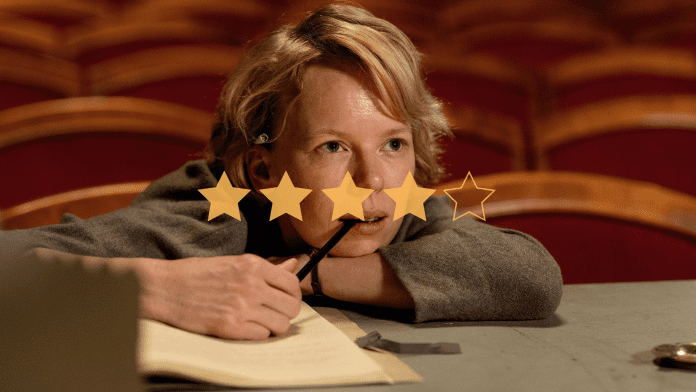★★★★✰
Tove, a new biopic of Tove Jansson—famous for creating the children’s comic book characters the Moomins—explores a pivotal decade in the artist’s life. The film, directed by Zaida Bergroth, is set in Helsinki in the decade following VE Day and follows Tove experimenting with her sexuality and her art.
Early on in the film, our protagonist moves into an apartment littered with debris—a sign of the devastation of World War 2. It’s suggested that Tove herself has faced comparable turmoil during the war. So, as she renovates what will come to be her living space, we also get a sense that she is about to embark on an emotional journey of sorts.
Born into a family of artists, Tove’s profession as a painter seems conventional to those around her. However, the film reminds us that she exists on the fringes of society. In an encounter with our protagonist, the Mayor describes being an artist as a wasteful pursuit. “In my family we pity those who aren’t artists,” is Tove’s response. Despite her defiance, we learn early on that her current profession is neither satisfying nor profitable. When she’s unable to pay the rent for her shabby apartment, she instead offers her landlady one of her paintings, much to the landlady’s quiet dismay. Pablo Picasso she is not!
Rather than find joy in her paintings, Tove instead finds herself indulging more in her doodles: playful little sketches of characters we instantly recognise as the Moomins. In the opening, we glimpse her sketching these characters in a bomb shelter, suggesting that the characters and their stories brought comfort to her and others during the war years. In this new post-war period, the Moomins come to represent liberation from the stuffy art circles her father wants her to belong to.
The conformity expected by the art world comes at the expense of Tove’s own identity. The film alludes to this when, at an exhibition of her work, Tove’s father hides one of her more expressive self-portraits from view. Tove resists this stifling environment and quietly puts her painting back on display. That Tove’s self-identity is bound up with her art and sexuality is then immediately made clear when the tall and flirtatious Vivica Bandler (Krista Kosonen) takes a liking to this portrait at her exhibit. The two embark on a sexual relationship which provides the catalyst for Tove’s emotional journey.
Before meeting Vivica, Tove is shown to be in a long-term affair with the socialist intellectual Atos Wirtanen (Shanti Roney). Their relationship is warm but stale; a marriage of convenience in everything but vows. Tove is happy to keep Atos, who lusts after her, at this comfortable distance. In contrast to this, Tove is helplessly in love with Vivica, who towers over her, not least in physical terms. What follows is an exquisite film about liberation, and the tangling up of love, art and identity.
Shot in 16mm, the film has a warm vintage feel. Catharina Nyqvist Ehrnrooth’s production design beautifully evokes its post-war setting, giving a historical accuracy to the film whilst also embracing the minimalism of the Moomin’s world.
The film features a series of parties showcasing the public’s relief at the end of the war. These scenes have a frantically energetic mood which is hard to resist and give body to Tove’s bohemian lifestyle. Interestingly, the film uses Tove’s frantic dancing as a motif to symbolise her as a free spirit. When paired with her sometimes excessive smoking and drinking, this somewhat evokes the nation’s famous lifestyle of kalsarikänni, the self-care practice of getting drunk alone in your underwear.
In this sense, the film calls to mind 2020’s Shirley, the biopic of horror writer Shirley Jackson starring Elizabeth Moss. In that film too our protagonist’s personal life becomes tangled with her art—to quite horrific consequences in the case of Shirley. Tove achieves something quite similar but with far more restraint; what attracts many to the Moomins is their source of comfort in difficult times. In this way, Tove is a portrait of the artist on her own terms.
The Verdict
Tove is an exquisite film about liberation, and the tangling up of love, art and identity. Zaida Bergroth’s film evokes the setting of post-War Helsinki with precision and grace, and brings to screen a triumphant story of self-expression.
Words by Jake Abatan
Support The Indiependent
We’re trying to raise £200 a month to help cover our operational costs. This includes our ‘Writer of the Month’ awards, where we recognise the amazing work produced by our contributor team. If you’ve enjoyed reading our site, we’d really appreciate it if you could donate to The Indiependent. Whether you can give £1 or £10, you’d be making a huge difference to our small team.
